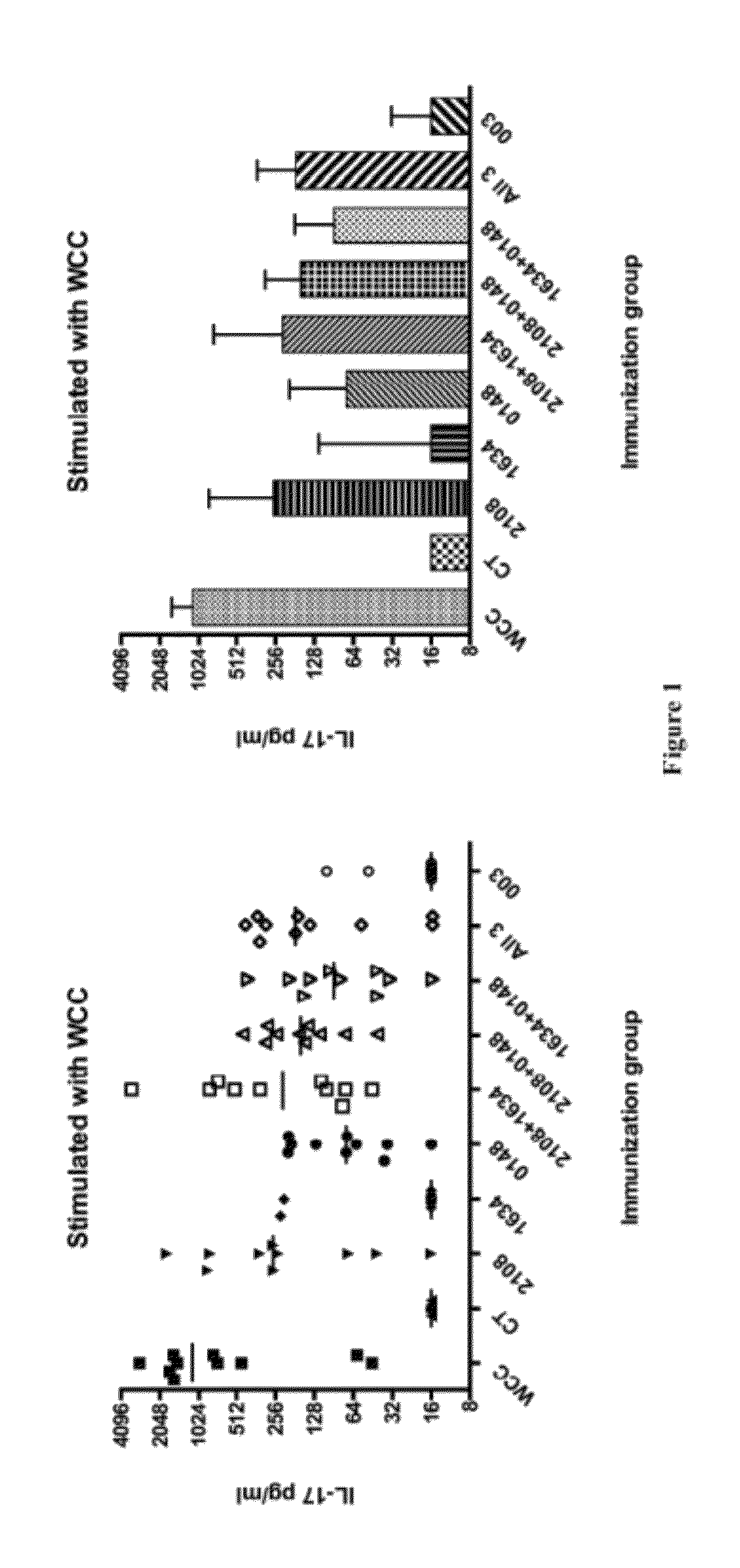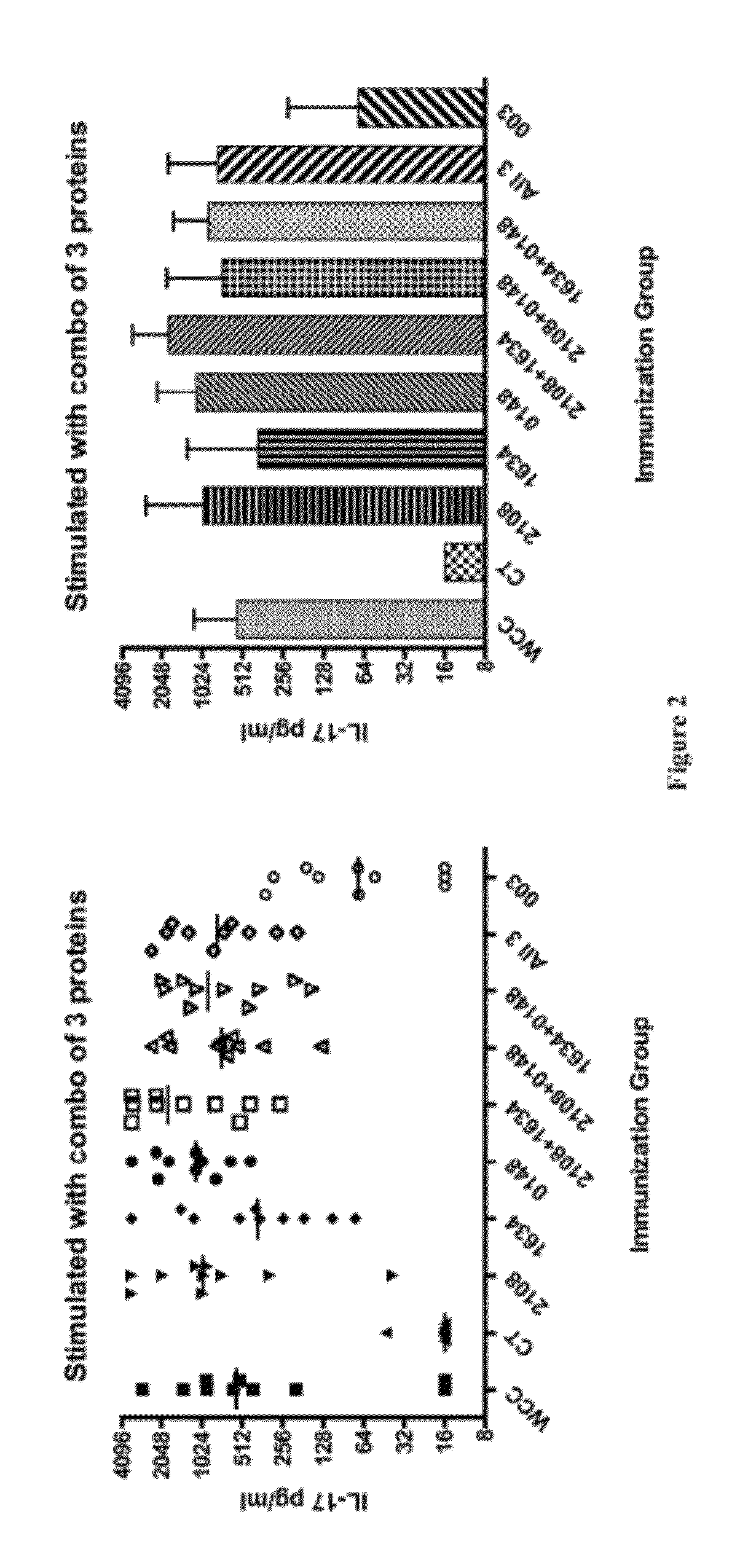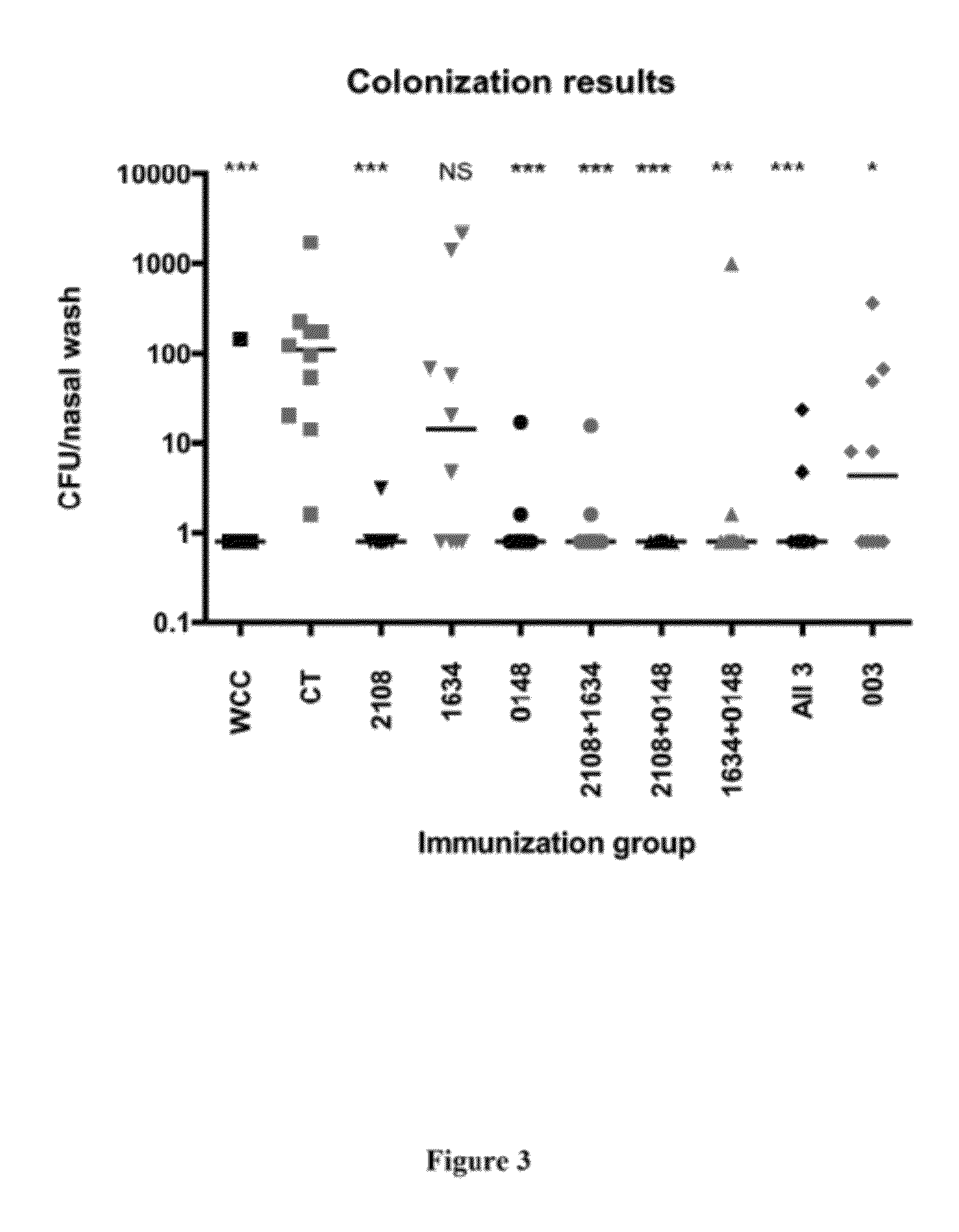Vaccines and compositions against Streptococcus pneumoniae
a technology of streptococcus pneumoniae and compositions, which is applied in the field of vaccines and compositions against i>streptococcus pneumoniae /i>, can solve the problems of increasing the risk of immunological tolerance, not responding well to t cell-independent antigens, and continuing to be a leading cause of sickness and death
- Summary
- Abstract
- Description
- Claims
- Application Information
AI Technical Summary
Benefits of technology
Problems solved by technology
Method used
Image
Examples
example 1
Antigen Identification and Pooled Murine Screens
[0795]Each open reading frame predicted in the S. pneumoniae TIGR4 genome was cloned into an expression vector comprising a tag that is able to be presented by the major histocompatibility complex (MHC). Each construct was then expressed in E. coli, and full-length expression validated by a surrogate assay that identifies the tag in the context of MHC. The screen is described in more detail in International Application WO 2010 / 002993. In order to facilitate screening the large library, the library was pooled such that four induced library clones were present in each well. In order to screen T cells from mice immunized against S. pneumoniae, an aliquot of the pooled library was added to peritoneal-derived macrophages. The macrophages were allowed to bind the tagged S. pneumoniae antigens via the MHC. After 2 hr at 37° C., the macrophages were washed with PBS. The macrophages were then fixed with 1% paraformaldehyde for 15 min and washed...
example 2
Deconvolution of the Positive Murine Pools
[0796]A secondary screen was used to determine which antigen(s) out of the four clones in each well induced the positive response observed in the pooled screen described in Example 1. All the clones in each positive pool were pulsed individually onto peritoneal macrophages in duplicate wells. T cells isolated from immunized mice from the same genetic background as the initial screen were used to screen the pulsed macrophages using the IL-17 assay described in Example 1. Individual antigens that induced an average response in the duplicate wells greater than two standard deviations above the mean of negative control samples were considered positive responses. The library plasmids present in these positive clones were sequenced to confirm the identity of the antigen. The antigens SP1574, SP1655, SP2106, SP0148, SP1473, SP0605, SP1177, SP0335, SP0906, SP1828, SP2157, SP1229, SP1128, SP1836, SP1865, SP0904, SP0882, SP0765, SP1634, SP0418, SP1923...
example 3
Antigen Identification and Pooled Human Screens
[0797]CD4+ T cells and CD14+ monocytes were isolated from peripheral blood acquired from human donors. The monocytes were differentiated into dendritic cells by culturing them in GM-CSF and IL-4 containing media, essentially as described in Tedder T F and Jansen P J (1997 “Isolation and generation of human dendritic cells.”Current Protocols in Immunology Supp 23: 7.32.1-7.32.16). After five days in culture, the dendritic cells were seeded into 384 well plates. The CD4+ T cells were non-specifically expanded in culture to ensure sufficient quantities.
[0798]Each open reading frame predicted in the S. pneumoniae TIGR4 genome was cloned into an expression vector comprising a tag that is able to be presented by the major histocompatibility complex (MHC). Each construct was then expressed in E. coli, and full-length expression validated by a surrogate assay that identifies the tag in the context of MHC. In order to facilitate screening the la...
PUM
| Property | Measurement | Unit |
|---|---|---|
| Fraction | aaaaa | aaaaa |
| Mass | aaaaa | aaaaa |
| Immunogenicity | aaaaa | aaaaa |
Abstract
Description
Claims
Application Information
 Login to View More
Login to View More - R&D
- Intellectual Property
- Life Sciences
- Materials
- Tech Scout
- Unparalleled Data Quality
- Higher Quality Content
- 60% Fewer Hallucinations
Browse by: Latest US Patents, China's latest patents, Technical Efficacy Thesaurus, Application Domain, Technology Topic, Popular Technical Reports.
© 2025 PatSnap. All rights reserved.Legal|Privacy policy|Modern Slavery Act Transparency Statement|Sitemap|About US| Contact US: help@patsnap.com



